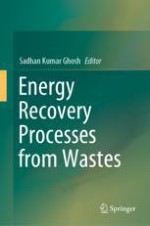2020 | OriginalPaper | Buchkapitel
Recycling Industrial Waste for Production of Bioethanol
verfasst von : Swagata Das, Shubhalakshmi Sengupta, Papita Das, Siddhartha Datta
Erschienen in: Energy Recovery Processes from Wastes
Verlag: Springer Singapore
Aktivieren Sie unsere intelligente Suche, um passende Fachinhalte oder Patente zu finden.
Wählen Sie Textabschnitte aus um mit Künstlicher Intelligenz passenden Patente zu finden. powered by
Markieren Sie Textabschnitte, um KI-gestützt weitere passende Inhalte zu finden. powered by
